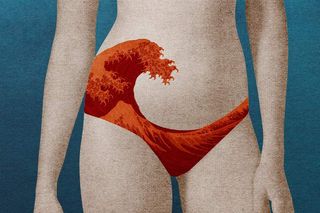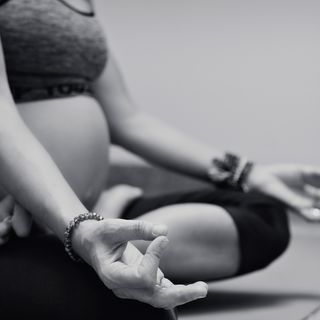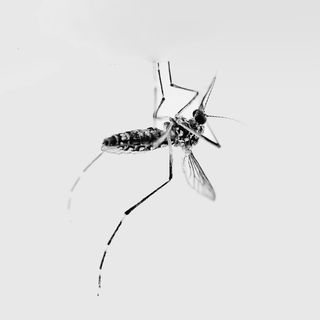
Your Menstrual Cycle Keeps Changing Throughout Your Lifetime
It’s not just puberty and menopause.

Women (if they’re lucky) are taught three things about periods: They begin; they last about a week and should recur every month like clockwork; until one day, they end.
It’s laughable how unprepared this leaves women. The menstrual cycle, like everything else about a person, ages; it’s not a tap that turns on at puberty and turns off at menopause. And because of natural hormone changes, decisions around birth control, and physiological changes after giving birth, periods can change well in advance of the age at which they disappear. I spoke with Surat-based gynecologist Dr Mona Shroff to find out how.
The menstrual cycle across a lifetime
First, a note on what’s normal, overall — a period that lasts anywhere from two to seven days, and that recurs on a cycle of every 21 to 35 days. The flow may be light, or it may be heavy; it depends on the woman.
Periods during adolescence
Menstruation starts before girls’ bodies are fully mature. Hormones regulated by the brain trigger ovulation in the ovary, which in turn triggers menstruation. But because adolescent girls are still developing, these hormones aren’t regularized, therefore, neither is their cycle.
For the first few years after menarche, periods are often irregular as girls’ bodies and brains continue to mature. This may mean a heavy flow for some; a longer gap between one period and the next, means more time for the blood-filled endometrial lining (which is what the body sheds during a period) to thicken.
Related on The Swaddle:
Researchers May Have Found the Cause of Heavy Periods
Periods during your late teens, 20s
Once the hormonal mechanism behind menstruation fully matures, ovulation regularizes, and so do periods, assuming no underlying reproductive condition like PCOS. Some women may see their flow become a little lighter, actually, as extended gaps between irregular periods shorten to a normal 21- to 35-day cycle. At the very least, women should be having eight to nine periods in a year by this age, Dr Shroff says.
But as ovulation and periods regularize, so do associated experiences. For some 30 to 40% of girls, the first couple of days during their period will accompanied by discomfort and light-to-medium pain. (Dr Shroff says severe pain from cramping affects about 10% of women.) Premenstrual syndrome symptoms — bloating, breast tenderness, mood changes, etc. — typically develop as the hormonal cycle regularizes, too. These vary widely for women; some are more sensitive to the hormone that triggers ovulation than others. For the most part, what you experience at this age will be what your PMS is like for the rest of your menstruating life.
But there’s one factor that’s become increasingly common during this decade that could change your period: hormonal birth control. Many women make use of the Pill, the Ring, or other hormonal birth control during their 20s, if they are not yet ready to have children. Hormonal birth control will make periods regular (typically on a 21- to 24-day cycle, depending on the type of birth control, Dr Shroff says), will lighten flow, will reduce pain, and will ease PMS symptoms.
Periods during your 30s
The hormonal mechanism that controls menstruation stays pretty steady throughout your 30s. Barring any new developments, the only change a woman might experience is less period pain, which typically reduces as one ages; with age, women’s hips naturally widen and reproductive tract muscles gradually lose elasticity, which means the body has to do less work to expel menstrual blood.
That said — this decade is typically filled with new developments that could change your period.
The first might be, conversely, an increase in pain — whether sudden or developing steadily over years, an increase in menstrual pain signals something is atypical. Women with endometriosis are typically diagnosed around age 30, when pain has increased to become excruciating.
And while uterine fibroids — small, benign growths on the uterine wall — can develop at any point during a woman’s reproductive life, they most commonly appear around the mid- to late-30s. Most fibroids remain small and can be overlooked, but for some women they could trigger irregular bleeding and heavier flows.
Related on The Swaddle:
The Overlooked, Little Understood Condition Often Mistaken for PMS
For women who use hormonal birth control, the 30s are typically the decade that they choose to stop — if not because they want to start a family, because beyond a certain point, evidence suggests that long-term hormonal contraceptive use raises the risk of breast cancer. This transition from the hormones of birth control to the body’s natural hormonal cycle can trigger differences in menstruation: some women experience a few months without any period at all, a phase known as post-pill amenorrhea. This phase will resolve on it’s own, however, says Dr Shroff. “It’s nothing to worry about.” Once it does, your period may be different from what you’ve become used to — reverting back to what it was like from before you started using hormonal birth control.
Finally, the 30s are the decade when most women who want children start having them. Pregnancy and childbirth can change your period. Of course, you’ll have no period during pregnancy, and most women who breastfeed continue to lack a period until they reduce or stop breastfeeding. This is totally normal. When your period finally does resume, it may be different. Period pain is often lessened. This is because the uterus and cervix have expanded, from carrying and delivering a baby, allowing the blood to flow more easily out of the body, and requiring the uterus to do less work in ‘pushing’ out the blood, Dr Shroff explains. The flow might seem slightly heavier, also.
Periods during your 40s
During your early 40s (potentially late 30s also), at peak sensitivity to the hormone that triggers ovulation, your cycle might shorten — from a 28-day cycle, to a 25-day cycle.
Related on The Swaddle:
Tampons to Sponges, A Round‑up of Menstrual Options
Throughout this decade, however, this sensitivity declines (plus, you have fewer eggs to ovulate with), Dr Shroff says. Your period increasingly starts to revert to what it was like in adolescence — more irregular and, if there are longer gaps in your cycle, heavier. You’re still likely to experience whatever PMS symptoms you always have. But period pain that’s not associated with a reproductive condition (like PCOS or endometriosis) typically reduces further. This phase is known as perimenopause.
When you haven’t had a period for a full year, menopause is official. For Indian women, says Dr Shroff, this occurs, somewhere from the mid-40s to early-50s; the average is age 47 to 48.
And menopause — well, that’s a whole other story.
Liesl Goecker is The Swaddle's managing editor.
Related


Antenatal Classes Give Many Women Comfort; Information Is a Bonus
